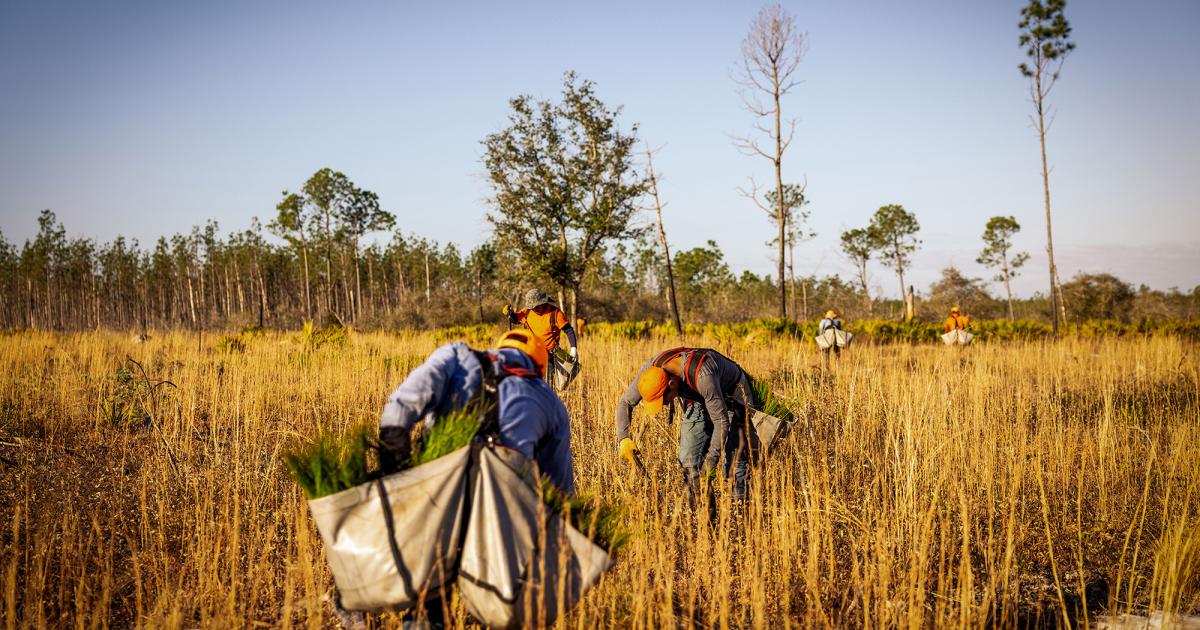
This article is sponsored by Procter & Gamble.
Planting a tree for the sake of saying you planted a tree isn’t enough. A science-based approach must be taken to ensure trees thrive and produce the greatest impact. NGOs running tree-planting activities and corporations can come together to implement thoughtful restoration projects that benefit people, climate and biodiversity.
Tree-planting initiatives are under a microscope — and with good reason. Projects that do not take the surrounding forest into consideration or that plant a single-species tree plantation can harm the ecosystem. Companies should look for partners who can help build credible projects with a strong methodology.
The Arbor Day Foundation, a United States nonprofit dedicated to planting trees, has a goal to plant 500 million trees worldwide in five years, which wouldn’t be possible without a vast network of global tree-planting organizations as well as individual and corporate supporters. The Foundation is applying intelligent, data-informed strategies to ensure trees are planted in forests of greatest need.
The nonprofit takes these three steps when building a restoration project with its partners:
- Study the data: Teams at the Arbor Day Foundation layer data and information to create an index that helps identify forests in the greatest need. The formula looks at where trees can have the most benefit based on impact of climate change, benefits to Indigenous and community lands, and biodiversity improvement potential. This approach accounts for the various benefits of trees — habitats for creatures, carbon absorption and community impact.
- Talk to local communities: 80 percent of the world’s remaining biodiversity is on land that is either managed by or is the customary traditional land of Indigenous people, making it imperative they are part of forest restoration conversations. Not only must tree-planting teams respect their rights, but they must listen to their points of view. Indigenous people have been managing forest land for thousands of years and can play a pivotal role in helping to guide a project to a successful outcome.
- Plant the right trees in the right places: It’s crucial to plant native trees in a natural pattern so they can grow and thrive. Similar to the first step, a science-based approach is needed. Especially as climate change intensifies and global temperatures increase, the Arbor Day Foundation places a focus on planting trees that can thrive for decades to come. This means trees that can survive the weather of today and the climate of the future, which begins with understanding how a warming climate can impact a tree’s ability to grow in parts of the country and regions of the world. Planting, moreover, is just the first step to unlocking the benefits of trees and forests. Building in a maintenance program will ensure trees survive in the long term. Often this includes a team visiting the site afterwards to ensure the trees are growing as planned.
The Arbor Day Foundation helps companies build their tree-planting commitments in a way that supports the ecosystem for the long term. For Procter & Gamble, for example, the success of its business is linked to the health and sustainability of the natural environment. The company understands its responsibility to help protect and restore critical ecosystems that sustain its operations, support the well-being of people and help protect the long-term health of the planet.
P&G supports several Arbor Day Foundation projects, including a commitment through its Charmin brand. Charmin protects forests by sourcing from 100 percent third-party FSC (Forest Stewardship Council)-certified forests and ensuring two trees are regrown for every one used. Going beyond its supply chain to make a positive impact, Charmin is also partnering with the Arbor Day Foundation to plant 1 million trees by 2025 in areas devastated by natural disasters, such as wildfires.
In the end, trusted partnership with credible organizations is imperative to creating successful tree-planting projects. When approached in a scientific and thoughtful way, these restoration initiatives can provide lasting benefits to forests, wildlife, people and climate.
- SEO Powered Content & PR Distribution. Get Amplified Today.
- PlatoData.Network Vertical Generative Ai. Empower Yourself. Access Here.
- PlatoAiStream. Web3 Intelligence. Knowledge Amplified. Access Here.
- PlatoESG. Carbon, CleanTech, Energy, Environment, Solar, Waste Management. Access Here.
- PlatoHealth. Biotech and Clinical Trials Intelligence. Access Here.
- Source: https://www.greenbiz.com/article/dos-and-donts-corporate-tree-planting-efforts
